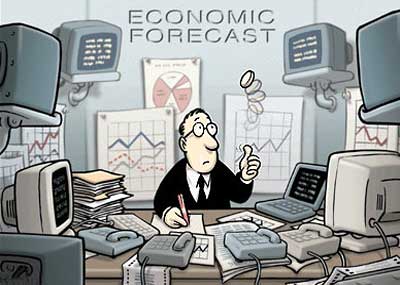
From the first steps in the Forex market, a trader is faced with two very important concepts of fundamental and technical analysis in this profession.
The importance of these two components of trading is difficult to overestimate and mastering them perfectly is the key to success. Indeed, since the work of a trader is connected with making a profit from a changing exchange rate, it is necessary to know the reasons and laws of such a change.
If we talk about the reasons for this change, then even common sense suggests that the price of a particular currency changes due to imbalances in the supply and demand balance, which in turn is caused by the state and prospects of the economy. In order to somehow determine the economy, you need to know and be able to “read” economic indicators and statistics of indicators, take into account their importance, the impact on the price movement of the national currency. All this is fundamental analysis, using which you can establish the reasons for the movement of quotations.
In addition to the reasons for the change in the exchange rate, the trader must also have knowledge and the laws of movement. Even if you glance at the chart of quotes in the trading terminal window, you can see that the rise or fall in the price of a particular currency is not straightforward, but the movement occurs along an arbitrary, at first glance, zigzag. Since the emergence of the Forex market, traders have tried to grasp patterns, build typical patterns of price behavior in different situations, derive mathematical and graphical formulas for movement. These laws worked out over the years and experience are the essence of technical analysis.
If we summarize all of the above, we can conclude that fundamental analysis tells us WHERE the price of a currency will move, and technical analysis – HOW it will move.
Let’s take a look at these two analyzes separately and try to define their structure, important components, methods and applications.
Fundamental analysis
This type of analysis is most often used by traders who prefer long-term trading. The forecast is based on the current economic and political situation. Traders analyze economic news and indicators and are guided by events that can have a significant impact on the global economy. These can be changes in the political life of the country, its general economic condition, the dynamics of the leading indices. At the same time, those statistics data that determine the state of a particular economy and form a general background for the currency are not discounted at all. Moreover, fundamental analysis even takes into account rumors and expectations.
Fundamental analysis is carried out using economic calendars, financial news feeds, reports of various government and non-government organizations and institutions, analysis of indicators of the state of the economy. There are entire companies specializing in this type of analytics. In the Down Jones news feed, you can always find the most up-to-date financial market data. In addition to such world-class institutions, each broker tries to provide its clients with the most useful information for trading. For example, TeleTrade organized an economic calendar for its clients, taking into account the importance of events and a brief description of their impact on the market, an operational news feed in the terminal and many other useful points. In addition, you can always find the opinions of the company’s leading analysts who help the trader in those
Technical analysis
This type of analysis is not so long-term and can be used for any time period. It is based on the assumption that the market has memory, and therefore, based on previous movements, it is quite possible to predict the future. That is, given the moment that technical analysis tells us about the way the price moves, it is possible to determine the nearest vector based on the patterns of behavior in the past. Simply put, technical analysis is an analysis of the history of quotes, their alternation and charted figures. In this analysis, traders use technical indicators that are built into the trading terminal. The variety of these indicators allows the trader to decide on the choice of strategy and select the necessary sets.
Technical analysis also has its own subtypes. One of the most common is candlestick analysis. Its essence is to find standard reversal or trend continuation patterns in the history of quotes. When one of these patterns appears on the chart, the trader can predict not only the future price movement, but also the possible breakout moment. There are also programs that can conduct technical analysis on their own for the presence and formation of certain patterns on the chart. When they appear, the program notifies the trader with a sound signal.
The technical analysis of the Forex market is no less difficult than the fundamental one. However, it is probably worth recommending it to novice traders, since here it is possible to work with indicators, levels and channels on small timeframes and small deposits. This is very important, since trading on fundamental analysis provides for the possibility of long and deep drawdowns, which not every novice trader can afford.
Summarizing the above, we can safely say that trading on one of these analyzes is possible, but the greatest success in the Forex market can be achieved by combining fundamental analysis with technical analysis and making forecasts based on aggregate data.

